I have a Sim900 from Sainsmart. I have a working serial connection from my Raspberry Pi to Sim900. I can write commands, receive responses, and even query data such as my phone number from the Sim Card. My Sim Card is an AT&T card. I cannot make Sim900 find a network and attempt to connect. Supposedly, it is supposed to do it on its own, but I have not seen that either. The only two things I can think of are that either the firmware is wrong, or the chip is not getting enough power. The firmware (from AT+CGMR) is Revision:1137B06SIM900M64_ST_ENHANCE. This appears to be the latest firmware that you can get from Simcom's Site. As for power, I am pretty sure the power is sufficient as I bought a charger usb cable and adapter in which the adapter that came with the cable promised to support 2 amps. I stripped the cable and gave it a 3 amp supply of power. The chip also doesn't randomly reset when I try connecting it. I can set settings that get lost on power loss, but they only disappear when I unplug the chip to reset the settings.
The below output is from my latest test to try to understand why I cannot send SMS.
----------------------------------------------------------------------------------------
Command: "b'AT\r\n\r\n'" Response: "AT
OK
"
----------------------------------------------------------------------------------------
----------------------------------------------------------------------------------------
Command: "b'AT+CMEE=2\r\n'" Response: "AT+CMEE=2
OK
"
----------------------------------------------------------------------------------------
----------------------------------------------------------------------------------------
Command: "b'AT+CFUN?\r\n'" Response: "AT+CFUN?
+CFUN: 1
OK
"
----------------------------------------------------------------------------------------
----------------------------------------------------------------------------------------
Command: "b'AT+CREG=2\r\n'" Response: "AT+CREG=2
OK
"
----------------------------------------------------------------------------------------
----------------------------------------------------------------------------------------
Command: "b'AT+CREG?\r\n'" Response: "AT+CREG?
+CREG: 2,0
OK
"
----------------------------------------------------------------------------------------
----------------------------------------------------------------------------------------
Command: "b'AT+COPS?\r\n'" Response: "AT+COPS?
+COPS: 0
OK
"
----------------------------------------------------------------------------------------
----------------------------------------------------------------------------------------
Command: "b'AT+QBAND?\r\n'" Response: "AT+QBAND?
ERROR
"
----------------------------------------------------------------------------------------
----------------------------------------------------------------------------------------
Command: "b'AT+CSQ\r\n'" Response: "AT+CSQ
+CSQ: 20,0
OK
"
----------------------------------------------------------------------------------------
----------------------------------------------------------------------------------------
Command: "b'AT+QENG?\r\n'" Response: "AT+QENG?
ERROR
"
----------------------------------------------------------------------------------------
----------------------------------------------------------------------------------------
Command: "b'AT+CIMI\r\n'" Response: "AT+CIMI
310REDACTED
OK
"
----------------------------------------------------------------------------------------
----------------------------------------------------------------------------------------
Command: "b'AT+CNUM\r\n'" Response: "AT+CNUM
+CNUM: "","1678REDACTED",129,7,4
OK
"
----------------------------------------------------------------------------------------
----------------------------------------------------------------------------------------
Command: "b'AT+CMGF=1\r\n'" Response: "AT+CMGF=1
OK
"
----------------------------------------------------------------------------------------
----------------------------------------------------------------------------------------
Command: "b'AT+CSCS=?\r\n'" Response: "AT+CSCS=?
+CSCS: ("IRA","GSM","UCS2","HEX","PCCP","PCDN","8859-1")
OK
"
----------------------------------------------------------------------------------------
----------------------------------------------------------------------------------------
Command: "b'AT+CSCS="GSM"\r\n'" Response: "AT+CSCS="GSM"
OK
"
----------------------------------------------------------------------------------------
----------------------------------------------------------------------------------------
Command: "b'AT+CREG?\r\n'" Response: "AT+CREG?
+CREG: 2,0
OK
"
----------------------------------------------------------------------------------------
----------------------------------------------------------------------------------------
Command: "b'AT+CMGS="978REDACTED"\r'" Response: "AT+CMGS="978REDACTED"
> "
----------------------------------------------------------------------------------------
----------------------------------------------------------------------------------------
Command: "b'Pi\x1a'" Response: "Pi
+CMS ERROR: operation not allowed
"
----------------------------------------------------------------------------------------
The Python3 script that generated this output is below:
import serial
import time
import binascii
ser = serial.Serial(port='/dev/serial0',baudrate=9600,timeout=1)
command = bytes("AT" + '\r\n', 'utf-8') + binascii.a2b_hex('0D0A')
ser.write(command)
rcv = ser.read(1000)
print("----------------------------------------------------------------------------------------")
print("Command: \"%s\" Response: \"%s\"" % (command, rcv.decode()))
print("----------------------------------------------------------------------------------------")
time.sleep(1)
command = bytes('AT+CMEE=2'+'\r\n', 'utf-8')
ser.write(command)
rcv = ser.read(1000)
print("----------------------------------------------------------------------------------------")
print("Command: \"%s\" Response: \"%s\"" % (command, rcv.decode()))
print("----------------------------------------------------------------------------------------")
time.sleep(1)
#ser.write(bytes("ATE0" + '\r\n', 'utf-8')) # Reverse it with ATE
#rcv = ser.read(1000)
#print(rcv)
#time.sleep(1)
command = bytes('AT+CFUN?'+'\r\n', 'utf-8')
ser.write(command)
rcv = ser.read(1000)
print("----------------------------------------------------------------------------------------")
print("Command: \"%s\" Response: \"%s\"" % (command, rcv.decode()))
print("----------------------------------------------------------------------------------------")
time.sleep(1)
command = bytes('AT+CREG=2'+'\r\n', 'utf-8') # What does 2 do?
ser.write(command)
rcv = ser.read(1000)
print("----------------------------------------------------------------------------------------")
print("Command: \"%s\" Response: \"%s\"" % (command, rcv.decode()))
print("----------------------------------------------------------------------------------------")
time.sleep(1)
command = bytes('AT+CREG?'+'\r\n', 'utf-8')
ser.write(command)
rcv = ser.read(1000)
print("----------------------------------------------------------------------------------------")
print("Command: \"%s\" Response: \"%s\"" % (command, rcv.decode()))
print("----------------------------------------------------------------------------------------")
time.sleep(1)
#command = bytes('AT+COPS=?'+'\r\n', 'utf-8')
#ser.write(command)
#rcv = ser.read(1000)
#print("----------------------------------------------------------------------------------------")
#print("Command: \"%s\" Response: \"%s\"" % (command, rcv.decode()))
#print("----------------------------------------------------------------------------------------")
#time.sleep(10)
command = bytes('AT+COPS?'+'\r\n', 'utf-8')
ser.write(command)
rcv = ser.read(1000)
print("----------------------------------------------------------------------------------------")
print("Command: \"%s\" Response: \"%s\"" % (command, rcv.decode()))
print("----------------------------------------------------------------------------------------")
time.sleep(1)
#ser.write(bytes('AT+COPS=0'+'\r\n', 'utf-8'))
#rcv = ser.read(1000)
#print("\"%s\"" % rcv.decode())
#time.sleep(1)
command = bytes('AT+QBAND?'+'\r\n', 'utf-8')
ser.write(command)
rcv = ser.read(1000)
print("----------------------------------------------------------------------------------------")
print("Command: \"%s\" Response: \"%s\"" % (command, rcv.decode()))
print("----------------------------------------------------------------------------------------")
time.sleep(1)
command = bytes('AT+CSQ'+'\r\n', 'utf-8')
ser.write(command)
rcv = ser.read(1000)
print("----------------------------------------------------------------------------------------")
print("Command: \"%s\" Response: \"%s\"" % (command, rcv.decode()))
print("----------------------------------------------------------------------------------------")
time.sleep(1)
command = bytes('AT+QENG?'+'\r\n', 'utf-8')
ser.write(command)
rcv = ser.read(1000)
print("----------------------------------------------------------------------------------------")
print("Command: \"%s\" Response: \"%s\"" % (command, rcv.decode()))
print("----------------------------------------------------------------------------------------")
time.sleep(1)
command = bytes('AT+CIMI'+'\r\n', 'utf-8')
ser.write(command)
rcv = ser.read(1000)
print("----------------------------------------------------------------------------------------")
print("Command: \"%s\" Response: \"%s\"" % (command, rcv.decode()))
print("----------------------------------------------------------------------------------------")
time.sleep(1)
command = bytes('AT+CNUM'+'\r\n', 'utf-8')
ser.write(command)
rcv = ser.read(1000)
print("----------------------------------------------------------------------------------------")
print("Command: \"%s\" Response: \"%s\"" % (command, rcv.decode()))
print("----------------------------------------------------------------------------------------")
time.sleep(1)
#ser.write(bytes('AT+CNMI=2,1,0,0,0'+'\r\n', 'utf-8'))
#rcv = ser.read(1000)
#print(rcv)
#time.sleep(1)
# TEXTING
command = bytes('AT+CMGF=1'+'\r\n', 'utf-8') # Select Message format as Text mode
ser.write(command)
rcv = ser.read(1000)
print("----------------------------------------------------------------------------------------")
print("Command: \"%s\" Response: \"%s\"" % (command, rcv.decode()))
print("----------------------------------------------------------------------------------------")
time.sleep(1)
command = bytes('AT+CSCS=?'+'\r\n', 'utf-8') # Possible Value: GSM
ser.write(command)
rcv = ser.read(1000)
print("----------------------------------------------------------------------------------------")
print("Command: \"%s\" Response: \"%s\"" % (command, rcv.decode()))
print("----------------------------------------------------------------------------------------")
time.sleep(1)
command = bytes('AT+CSCS="GSM"'+'\r\n', 'utf-8') # Possible Value: (8859-1/latin-1)
ser.write(command)
rcv = ser.read(1000)
print("----------------------------------------------------------------------------------------")
print("Command: \"%s\" Response: \"%s\"" % (command, rcv.decode()))
print("----------------------------------------------------------------------------------------")
time.sleep(1)
command = bytes('AT+CREG?'+'\r\n', 'utf-8')
ser.write(command)
rcv = ser.read(1000)
print("----------------------------------------------------------------------------------------")
print("Command: \"%s\" Response: \"%s\"" % (command, rcv.decode()))
print("----------------------------------------------------------------------------------------")
time.sleep(1)
command = bytes('AT+CMGS="978REDACTED"', 'utf-8') + binascii.a2b_hex('0D') # 0D is CR
ser.write(command)
rcv = ser.read(1000)
print("----------------------------------------------------------------------------------------")
print("Command: \"%s\" Response: \"%s\"" % (command, rcv.decode()))
print("----------------------------------------------------------------------------------------")
time.sleep(5)
command = bytes("Pi",'utf-8') + binascii.a2b_hex('1A')
ser.write(command)
rcv = ser.read(1000)
print("----------------------------------------------------------------------------------------")
print("Command: \"%s\" Response: \"%s\"" % (command, rcv.decode()))
print("----------------------------------------------------------------------------------------")
time.sleep(5)
#ser.write(binascii.a2b_hex('0D0A')) # 0D is CR
#rcv = ser.read(1000)
#print("\"%s\"" % rcv.decode())
Also, the same issue happens when running in minicom. This is not a Python specific issue. Although there is an issue with displaying data from the AT command "AT+COPS=?" in Python. However, the displaying bug is an issue for another day as I can still read it in minicom.
Edit: Clarify the question
Basically, I want to know why I cannot send SMS and how to fix it! I am sure it has to do with not registering on any network, but no network shows up to connect to when running "AT+COPS=?". Listing any potential reasons is appreciated. I can do things such as take a picture of my setup if I need to.
Edit: Provide some insight to "AT+COPS=?"
Using Minicom, I get the below result with "AT+COPS=?". I cannot test this command in Python 3 as it makes the feedback from itself and all other future commands empty, as in empty quotes (e.g. ""). It is a problem even when CMEE is enabled to provide verbose text. This gets reset when I reset the Python program.
AT+COPS=?
+COPS: (1,"Off Network","","310260"),,(0,1,4),(0,1,2)
OK
I get the above result every time I run the command, no matter what I set CREG to.


